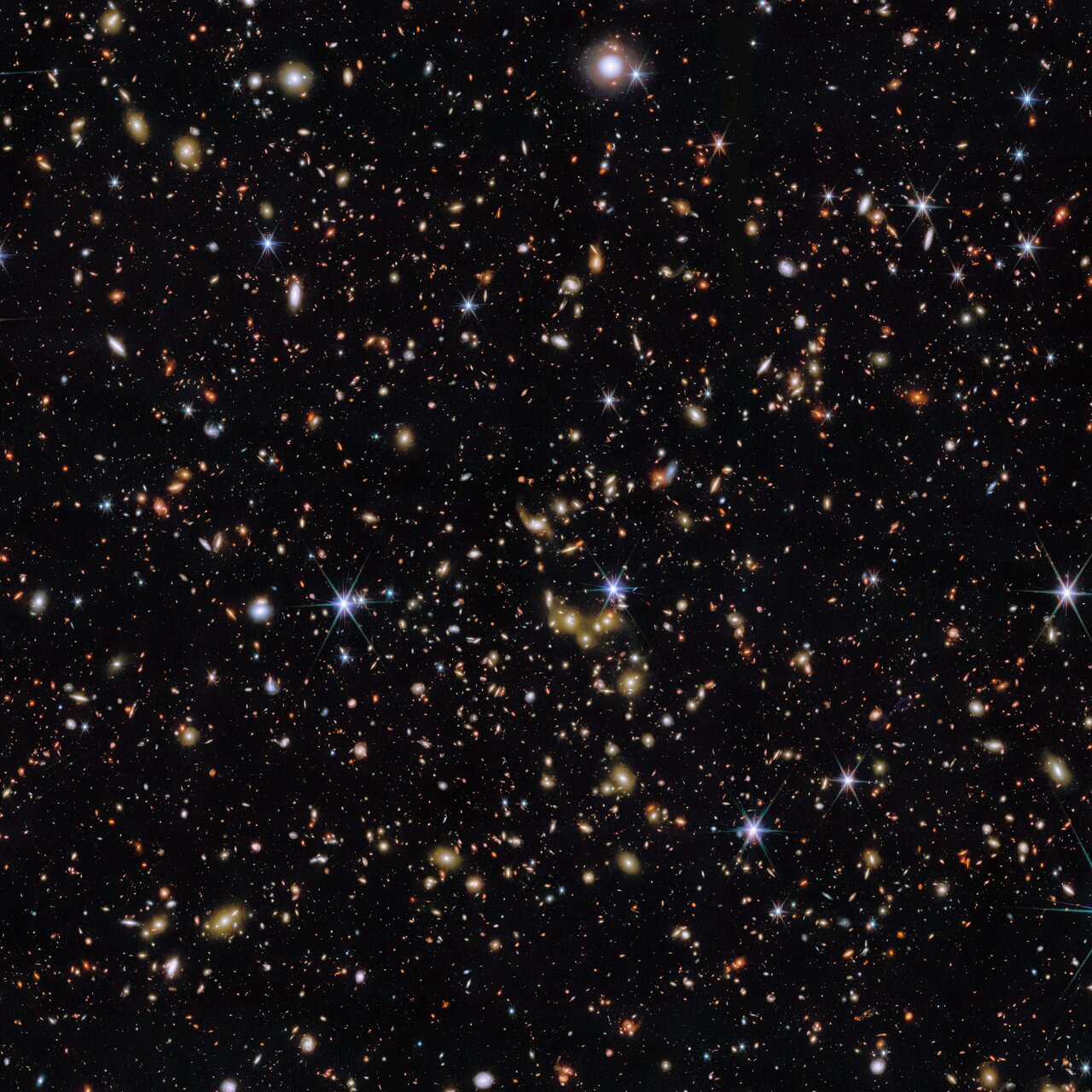What it is: Thousands of galaxy groups from the early universe
Where it is: 12 billion light-years away in the constellation Sextans
When it was shared: April 29, 2025
Why it’s so special: Sitting across a part of the night sky that looks away from the Milky Way and into the distant universe, the constellation Leo, the lion, is known to astronomers as the realm of the galaxies. But when the James Webb Space Telescope (JWST) peered next to the lion, it revealed astounding new details. In the tiny constellation Sextans, JWST detected groups of galaxies up to 12 billion light-years away. The universe is 13.8 billion years old, so these galaxies date back to the universe’s early years.
Just as gravity causes moons to orbit planets, planets to orbit stars and stars to orbit the centers of their galaxies, galaxies themselves orbit each other to create gravitationally bound groups, according to NASA. This largest-ever sample of 1,678 galaxy groups is helping astronomers figure out what the early universe was like and how it has changed over the past 12 billion years.
Related: Scientists spot a ‘dark nebula’ being torn apart by rowdy infant stars — offering clues about our own solar system’s past
Galaxies that existed in the early universe had irregular shapes and formed lots of stars, while galaxies that formed later appear more symmetrical and structured, with elliptical and spiral galaxies — like our Milky Way.

“Like humans, galaxies come together and make families,” Ghassem Gozaliasl, a researcher in astronomy at Aalto University, head of the galaxy groups detection team and lead author of a study on the findings accepted for publication in the journal Astronomy and Astrophysics, said in a statement. “Groups and clusters are really important because within them galaxies can interact and merge together, resulting in the transformation of galaxy structure and morphology.” In these galaxies, astronomers can also study dark matter, supermassive black holes and the gas between galaxies.
NASA has a long history of turning its space telescopes to face the universe at large to take “deep field” images. The first was the Hubble Deep Field in 1995, which included about 3,000 distant galaxies. According to NASA, the installation of a new camera in 2002 enabled the even more impressive Hubble Ultra Deep Field in 2004, which revealed almost 10,000 galaxies, some existing when the universe was just 800 million years old. That was followed by the Hubble eXtreme Deep Field, which uncovered 5,500 galaxies up to 13.2 billion light-years away.
However, it didn’t take long after its launch for JWST to better its optical forerunner, in 2022 delivering its first deep field of galaxy cluster SMACS 0723 as it appeared 4.6 billion years ago — one of the deepest, sharpest infrared images of the distant universe to date. JWST followed that up with a deep-field image of Pandora’s Cluster in February 2023.
For more sublime space images, check out our Space Photo of the Week archives.
